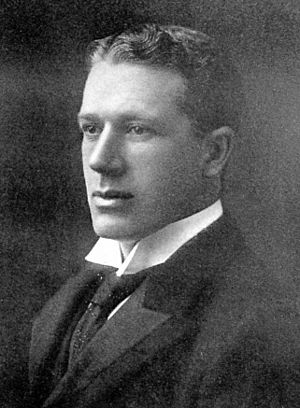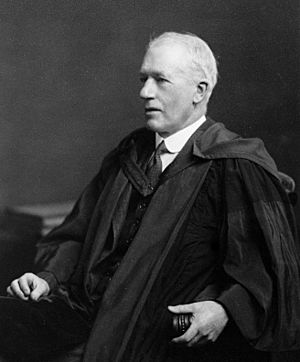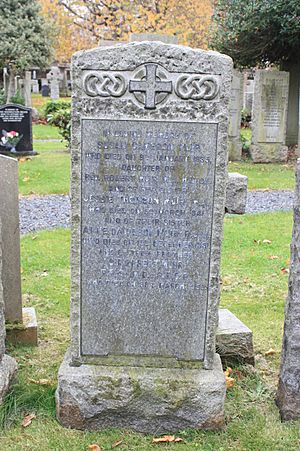Robert Muir (pathologist) facts for kids
Quick facts for kids
Robert Muir
|
|
|---|---|

Robert Muir, c. 1900
|
|
| Born | 5 July 1864 |
| Died | 30 March 1959 (aged 94) |
| Occupation | Physician, pathologist |
| Awards | Royal Medal (1929) Lister Medal (1936) |
Sir Robert Muir (born July 5, 1864 – died March 30, 1959) was an important Scottish doctor and scientist. He was a pathologist, which means he studied diseases and how they affect the body. Sir Robert Muir did amazing work in immunology, which is the study of how our bodies fight off sickness. He was a very important person in medical research in Glasgow in the early 1900s.
Contents
Sir Robert Muir's Life and Education
Robert Muir was born in a place called Balfron in Stirlingshire, Scotland, on July 5, 1864. His father, Reverend Robert Muir, was a minister. Sadly, his father passed away when Robert was 18 years old. His mother's name was Susan Cameron Duncan.
Robert went to school at Hawick High School and Teviot Grove Academy. After that, he studied at the University of Edinburgh. He earned his first degree, an MA, in 1884. Then, in 1888, he became a medical doctor, getting his MB CM degree with top honors. He continued his studies and research for two more years. In 1890, he received his MD degree, also with honors and a special medal.
Becoming a Medical Expert
Robert Muir became a Member of the Royal College of Physicians of Edinburgh in 1894. The next year, in 1895, he became a Fellow, which is a higher honor.
From 1894 to 1898, he taught about diseases caused by bacteria at Edinburgh University. He then became the first professor of pathology at St Andrews University (Dundee) for a short time (1898–1899).
Most of his career was spent as a professor of pathology at Glasgow University. He worked there from 1899 to 1936. During this time, he became known worldwide as a top expert in pathology. He was especially good at understanding blood cell disorders and breast cancer.
Important Roles and Awards
Sir Robert Muir was recognized for his great work many times. In 1911, he was chosen as a Fellow of the Royal Society. This is a very respected group of scientists. In 1916, he also became a Fellow of the Royal Society of Edinburgh. He even served as the vice president of the Royal Society of Edinburgh from 1950 to 1953.
He was also a member of other important medical groups, like the Royal Society of Medicine. In 1929, he received the Royal Medal from the Royal Society. This award was given to him for his important work in immunology, which is how the body fights off diseases.
He received many honorary degrees, including a D.Sc. in 1934. In 1936, he was given the Lister Medal for his contributions to surgery. He also gave a special lecture about his research on cancer, especially breast cancer.
During the First World War, Sir Robert Muir helped as a Lieutenant Colonel in the Royal Army Medical Corps. He was in charge of studying diseases and bacteria in hospitals across Scotland. He also checked on laboratories in Scotland. In 1934, he was given the title of Sir, which is a special honor from the King or Queen.
Later Years and Passing
Sir Robert Muir retired from his work in 1936. He passed away in 1959 when he was 94 years old. He never married or had children. He is buried next to his sister, Anne Davidson Muir, who was an artist. Their grave is in Dean Cemetery in Edinburgh.



